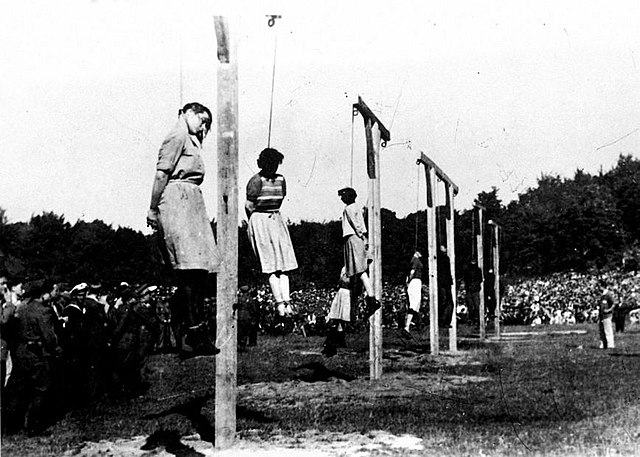An executioner, also known as a hangman or headsman, is an official who effects a sentence of capital punishment on a condemned person.
Symbolic robed figure of a medieval public executioner at Peter and Paul Fortress, Saint Petersburg, Russia
Photograph (hand-coloured), original dated 1898, of the lord high executioner of the former princely state of Rewah, Central India, with large executioner's sword (Tegha sword)
Depiction of a public execution in Brueghel's The Triumph of Death 1562–1563
Stylised depiction of public execution of pirates in Hamburg, Germany, 10 September 1573
Hanging is killing a person by suspending them from the neck with a noose or ligature. Hanging has been a common method of capital punishment since the Middle Ages, and is the primary execution method in numerous countries and regions. The first known account of execution by hanging is in Homer's Odyssey. Hanging is also a method of suicide.
Detail from a painting by Pisanello, 1436–1438
Execution of guards and kapos of the Stutthof concentration camp on 4 July 1946 by short-drop hanging. In the foreground are the female overseers: Jenny-Wanda Barkmann, Ewa Paradies, Elisabeth Becker, Wanda Klaff, Gerda Steinhoff (left to right).
Mass execution of Serbs by the Austro-Hungarian army in 1916
The execution of Henry Wirz in 1865 near the U.S. Capitol; Wirz was given a standard drop, which did not break his neck








